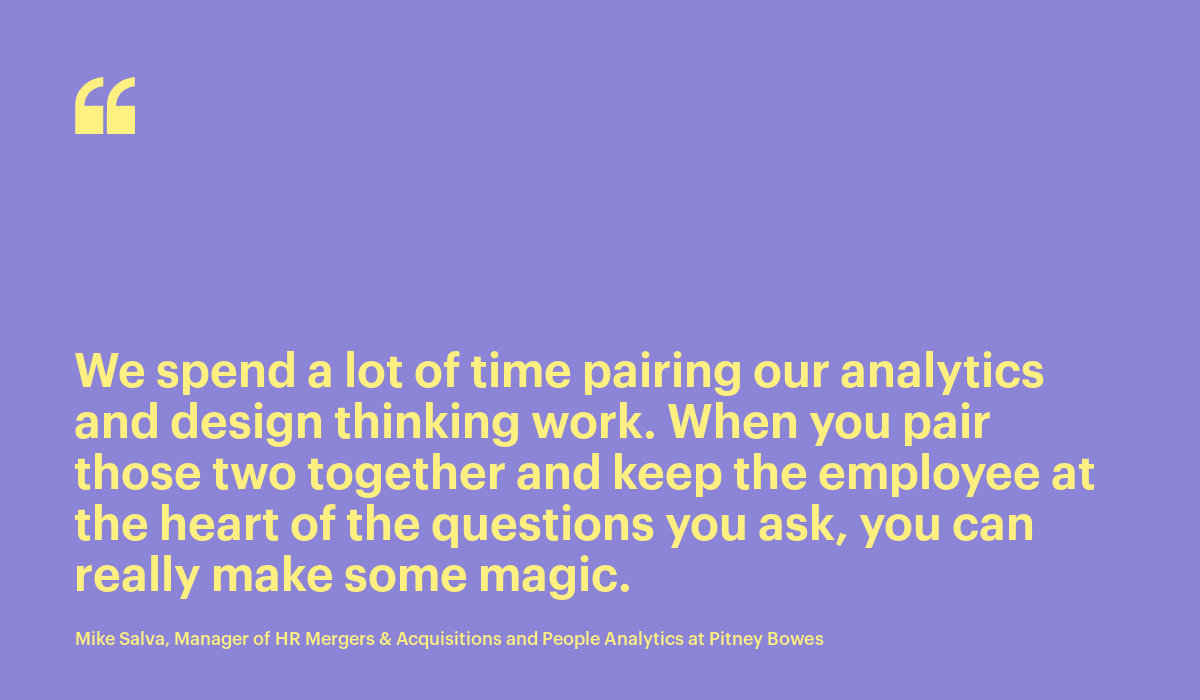How to Build a People Analytics Dream Team to Help Your Business Thrive
When it comes to people analytics, having right technology is only part of the equation. Learn how to build a people analytics dream team.

60 percent of companies grew their people analytics teams in the year leading up to June 2021, according to research conducted by Insight222.
It’s no coincidence that this period was also marked by a reckoning with social injustice, persistent staffing shortages, and the emergence of long-term hybrid work models. Clearly, there is a growing recognition that people analytics can help organizations bridge the gap between the complexities of people and business results.
Of course, the right technology is essential to getting data-backed answers—whether they relate to pay equity, employee retention programs, or remote work compensation decisions. But there’s another crucial ingredient to making good talent decisions based on data: having the right people analytics people.
Building a people analytics team
If you are just getting started with people analytics, it’s not necessary to start with a people analytics team of five (although many established teams will have groups of this size or larger).
With the right breadth of expertise and skills, you can create a sustainable process for elevating a data-driven people strategy to help your business—and your employees—thrive. To start a people analytics team, all it takes is three core roles: The right analyst, data wrangler, and people analytics leader. Here are the definitions of these roles and the skills requirements for each.
1. The People Analyst: Translating Data into Business Results
This is the most crucial role on a people analytics team. A people analyst engages with specific stakeholder groups to understand the business challenges they face. The analyst designs analytic approaches that solve the business challenges and also communicates the findings along with recommendations for changes in practice.
In other words, using people analytics is not about improving HR’s processes for HR’s sake, and the people analyst knows how to elevate people strategies so they impact broader business outcomes.
Mike Salva, Manager of HR Mergers & Acquisitions and People Analytics at Pitney Bowes, is a great example of a people analyst who is making a tangible difference for his business. He describes his work this way: “At Pitney, we spend a lot of time pairing our analytics and design thinking work. When you pair those two together and keep the employee at the heart of the questions you ask, you can really make some magic.”

Successful people analysts come from anywhere along a spectrum of expertise. The ideal candidate could be a trained data scientist, an industrial and organizational psychologist, or even a data-oriented HR business partner. There are several common attributes, however, that successful people analysts have. These include:
A proven ability to deliver results from business research programs—either as an internal analyst or an external consultant.
Experience working or studying in a social science field that dealt with people data and people decisions such as marketing, industrial psychology, economics, or HR.
The ability to clearly articulate how HR practices link to and impact the operations of the business.
Executive-level consulting and advisory skills.
When building a team from scratch, hire someone with senior-level experience. They will need to run complex projects and engage at an executive level. Once the people analytics function is established, it is possible to introduce more junior-level people analyst roles who either work in support of the senior analyst or handle their own smaller-scale projects.
2. The Data Wrangler: Delivering Trustworthy Answers
The data wrangler supports the analyst with the more technical aspects of extracting insights from people data. This role is vital to the team: Senior leaders typically lack confidence in HR’s numbers, and the right data wrangler has the skills and expertise needed to produce answers that the business will trust.
This person assembles, cleans, and shapes the analytic models needed to answer specific business questions–whether it’s related to turnover, engagement, or compensation adjustments. This person also has a deep understanding of where and how data is stored within the business.
Often the people who perform this role will come from a background in report creation. This makes sense, however, there are additional considerations for a people analytics data wrangler role. Here are a few of them:
Hire a data wrangler to support the people analyst specifically. Some organizations use report creators or data wranglers who are part of an HR shared service group. This approach has limitations. In a shared services model, for example, there can be a break in continuity between the people who support different requests. This can lead to rework due to gaps in understanding.
Curiosity is an asset. Data wranglers who want to know why the data is being sourced, how it will be used, and who will be consuming it will invariably add value to the people analytics project by recommending additional sources of data or even doing some data pre-processing or analytical modelling to help the analyst do their work.
Look beyond IT. One of the key misperceptions is that people analytics is an IT problem and best solved by people who understand technology. However, IT people are not the experts when it comes to the unique challenges associated with people analytics. They will only be able to provide relevant guidance and support when the details of the business requirements are owned and led by those with HR expertise. A data wrangler with experience in the HR domain is an asset.
Even as your people analytics capabilities mature and your projects become more complex, you don’t necessarily need to add more data wranglers as you scale. To learn how to expand your people analytics program to thousands of users without hiring a huge team of data wranglers, read this post here.
3. The People Analytics Leader: Driving the Data-Driven Vision
The people analytics leader needs to be considered separately from roles that are more focused on execution. People analytics is not an easy function to “switch on,” and it impacts the work of many other groups. This is where experience and executive-level leadership skills become important.
A strong people analytics leader proactively engages with their peers across functions to elevate the role of people analytics in the business. For example, headcount is one of the measures that drives many decisions within every organization. But how finance and HR tally headcount is often different. Faced with two different numbers, business users are most likely to trust and source the number they have used in the past, meaning that finance’s results often remain the standard.
Rather than accepting this outcome, a solid people analytics leader proactively engages with the finance team to resolve how best to report headcount across the organization.
When the organization shifts headcount responsibility to the HR team, it’s more than an administrative win. It sends the message that HR is a credible, valuable function.
It’s also becoming increasingly crucial for the people analytics leader to champion data ethics. As it becomes easier to passively collect information about employees through sophisticated sensors and text messaging platforms, organizations need leaders who can answer those important “should we?” questions when it comes to analyzing employee data. This way, the people analytics leader can steer the organization towards a data-driven, insight-led culture in a responsible way.
Laying The Foundation for People Analytics Success
So there you have it—three key roles for a people analytics dream team. Of course, things are different at more mature organizations: According to our research, advanced organizations have an average of 15.5 people analytics members.
But do not balk at this if you are just getting started. It is more important to have the key bases covered than to have a complex team structure, making it easier to scale the team in a way that builds strength and efficiency over time. With the right analyst, data wrangler, and people analytics leader, you are on your way to delivering the day-to-day, evidence-based talent decisions your organization needs to thrive in this evolving talent market.


